Comic Conventions Aren't Just For Comics Anymore
It's Harder To Sell Your Comic If Most of The Crowd Is Not There For Comics
This past weekend I exhibited in Artists’ Alley at Pasadena Comic Con. If you came to my table and bought something or signed up for this newsletter, thank you! You helped make the day a fun experience for me, and I truly appreciate it!
The Good Part
I got my first sketch cover commission!
… And I had a lot more fun doing it than I expected! The client wanted an an homage to Todd McFarlane’s now-classic cover to Amazing Spider-Man #300. He showed me photos of his collection of sketch covers, all versions of this same image with different characters in the wacky Spidey pose! I was flattered that he wanted to add Steamroller Man to this pantheon of heroes, and the money from this commission paid for my table. It really saved the day.
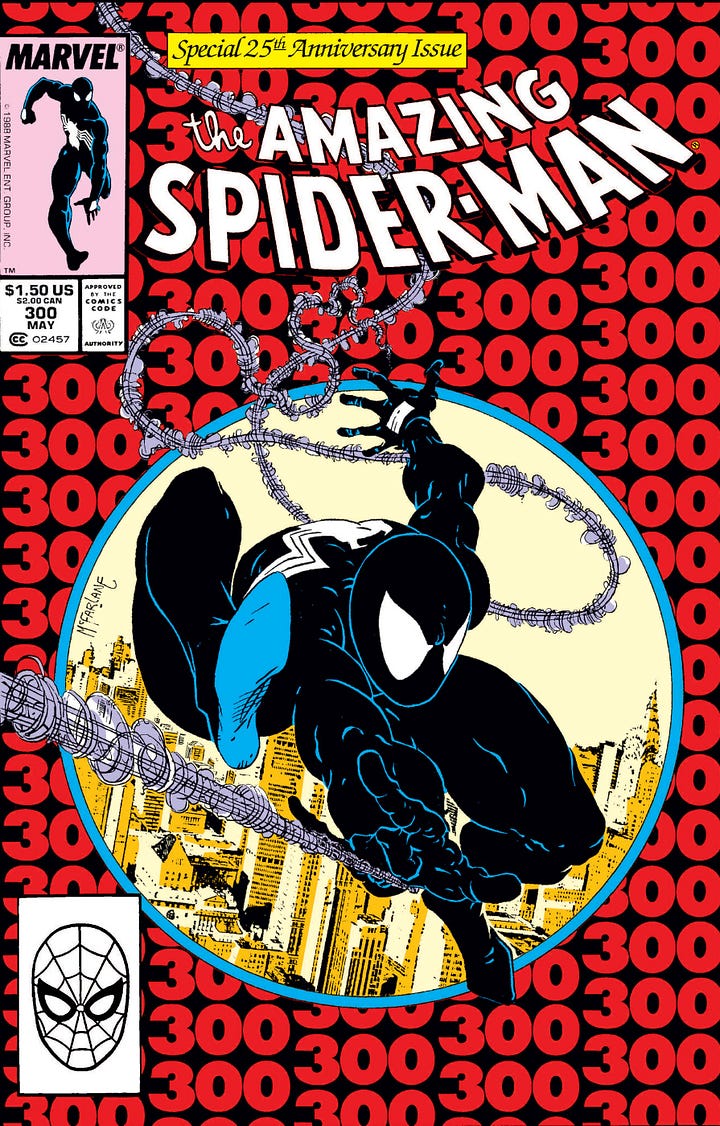
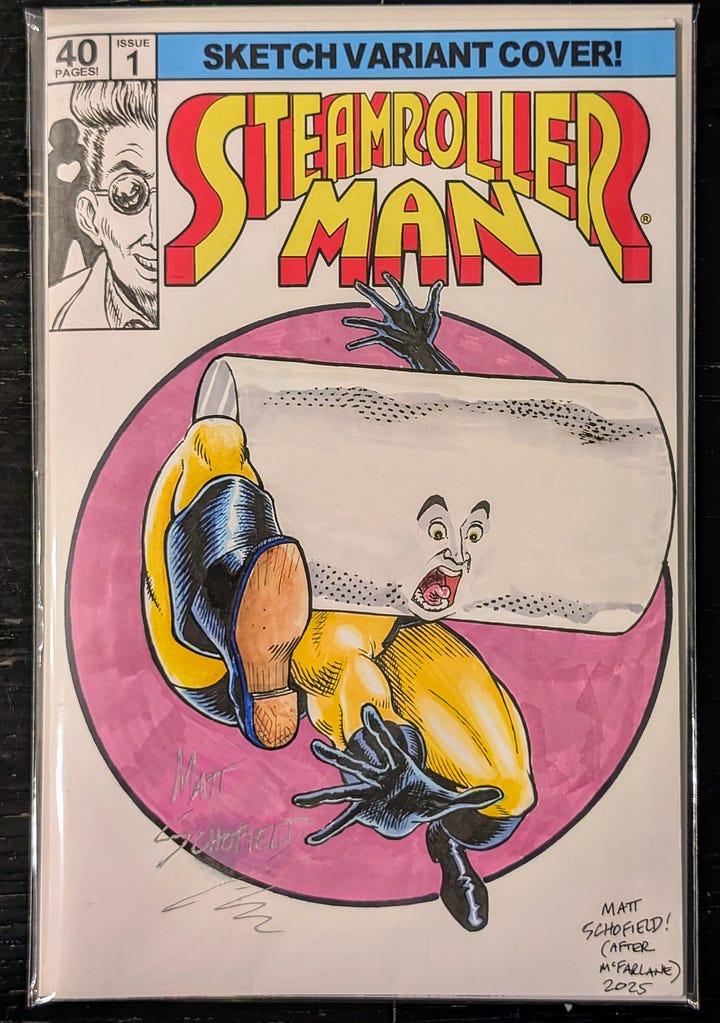
I had a lot of fun with this drawing! I think trying to match the twisted and cheated anatomy of the original forced me to loosen up a bit more with my own drawing, and I went slightly more animated and cartoony with Steamroller Man’s face than I normally would, too. I like the result and want to try and keep this quality in my drawings, going forward!
By the way, if you’re interested in a sketch cover commission, please click this button to fill out the contact form!
I was also able to try out a new screentone-pattern rubber stamp that I recently got from a Kickstarter campaign, for the texture on his head. Adding screentone patterns is something I can do very easily in Clip Studio Paint, but I’ve been searching for a way to reproduce the effect in physical media, without buying sheets of adhesive Letratone, which are hard to find and a bit expensive. I like the effect I got here, and am thinking I want to experiment with colored ink next time. If you want to get some of these stamps, the guy who makes them is now selling them online!
Also, here are some of the cooler cosplayers I saw there:

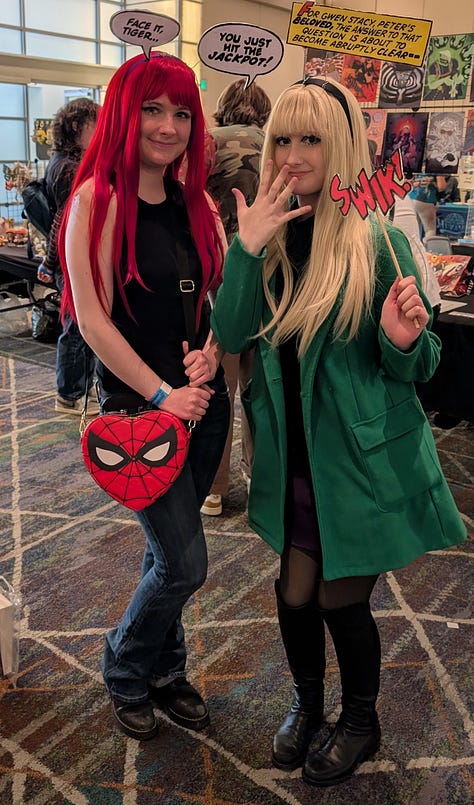
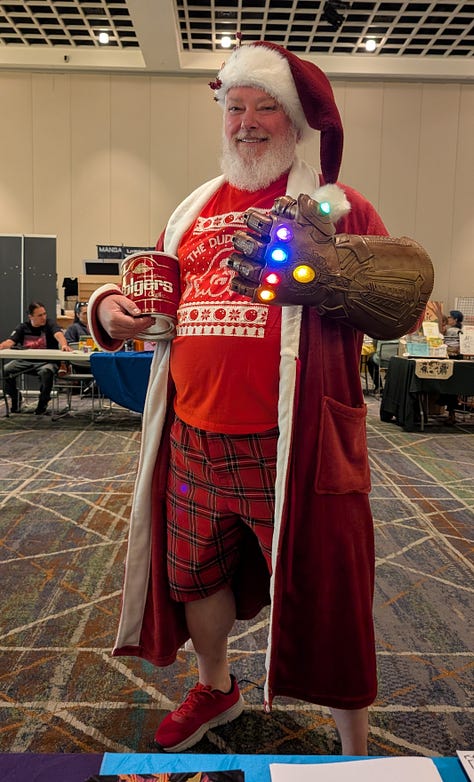
The Not-So-Good Part
This was my fourth comic convention as an exhibitor and unfortunately, my worst so far in terms of number of copies sold (only 6 of the main cover, and 2 mini-comics). It was a humbling experience, in contrast to my best showing yet, just the week before (39 copies of the main cover, and 12 mini-comics over two days)!
It’s the contrast that bruises the ego, of course, and I’m still so new to the tabling experience that I don’t yet have a true benchmark of what a “typical” convention looks like for me. Maybe it was a fluke, and maybe it’s best not to judge it in comparison, but just to let it be its own experience…
However… In conversations with other Artist Alley creators that day, I discovered that we all had a pretty dismal sales day, “slow” being the common descriptor. So I began to wonder if there was something specific to this convention that could explain the slow day we all had. Here are some details of note:
The Artists’ Alley area was in a room separated from the main convention floor by a small doorway that was marked by a smaller sign to the side of the door. The placement of the sign meant that it could not be seen above the crowd from most points in the main exhibit hall. I believe this reduced any flow-through foot traffic from the main hall, which was MUCH more crowded.
For some reason, the Artists’ Alley room was dimly lit, which created a somewhat subdued vibe in the room, whereas the main hall was very brightly lit and, perhaps not coincidentally, all abuzz with activity.
The aisles in Artists’ Alley were very wide. People could walk down the center and be 10 feet away from the tables on either side - meaning they never got close enough to really see the comics on those tables. Not good for casual browsing, which makes it harder to convert to a sale!
An Unfortunate Fact of Modern Comic Conventions
These days most conventions that are labeled “Comic” conventions are not only promoting and featuring comics and their creators. In fact, their main focus seems to be popular culture in general, along with related memorabilia and merchandise, of which comics are now a rather small (and some would say dwindling) piece of the pie. Even the mother of all conventions, San Diego Comic-Con, has seen comic companies and comic retailers opt out of exhibiting there in recent years, due to the poor return-on-investment of paying for a space there. So, for comic makers, unless you are at a convention like IC3, SPX, ComicArts LA, HeroesCon, or one similarly focused solely or primarily on comics, you have to reconcile yourself with the fact that most of the attendees at your average convention are probably not there primarily for comics.
So what’s an indie comic creator to do in this situation?
Unless you’re a major player with a lot of money to spend on a bigger booth, when you apply to exhibit at a convention, you’re at the mercy of wherever the convention organizers want to put you.1 So if you end up in a bad spot in the convention exhibit hall, you can either just go with the flow, and view it all as part of the experience, as I did, this past weekend; or you can really ramp up your salesmanship by directly calling people over to your table with the old “Hey are you guys into superheroes/vampires/scifi/horror/etc - can I tell you about my comic” cold-call pitch. My next-table neighbor at this convention was absolutely WORKING IT in this way, but at the end of the day even he said his sales were not anything to write home about (though from what I could observe I think he did a bit better than me) and his voice was almost gone from all the carnival barking.
Personally, as a longtime con attendee, I hate getting the “hard sell” pitch, but my experience behind the table has certainly allowed me to understand the motivation behind it!
What I’ve Learned
When I book my next convention table I will be paying particular attention to where the Artist’s Alley area is, relative to the main exhibit hall. I’m going to think twice about what I’m paying for a table if it will be in a completely separate room from the rest of the convention. Whether the convention is purely comics-focused or casts a wider pop culture net is also something important to consider. And there’s always the matter of whether to sell fan art prints… I guess it’s just a matter of weighing my costs against my potential revenue, factoring in the table location, the expected size of the crowd, and whether the crowd is likely to even be looking for comics at all. I’m not experienced enough yet to be able to predict anything, and maybe it’s not even possible to truly predict how any given convention will go. Best just to enjoy the ride while it lasts, I guess!
All that being said, I’m doing ANOTHER convention this Saturday (tomorrow)!
The TAG Zine Fest is a little mini-con, focused on comics and zines created by members of The Animation Guild (the trade union for animation workers, of which I am a member)! It’s free entry, so if you’re in Burbank this Saturday afternoon, stop by between 1pm and 5pm to see some cool stuff and support some indie creators!
Thanks for reading, and as always - Keep Rolling!
Matt
I know that San Diego Comic-Con has such a high demand for tables that they give preference to people who have tabled with them the previous year, creating a “legacy” system of sorts where you can be in the same spot year after year.


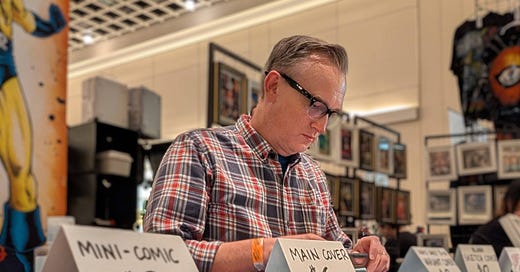




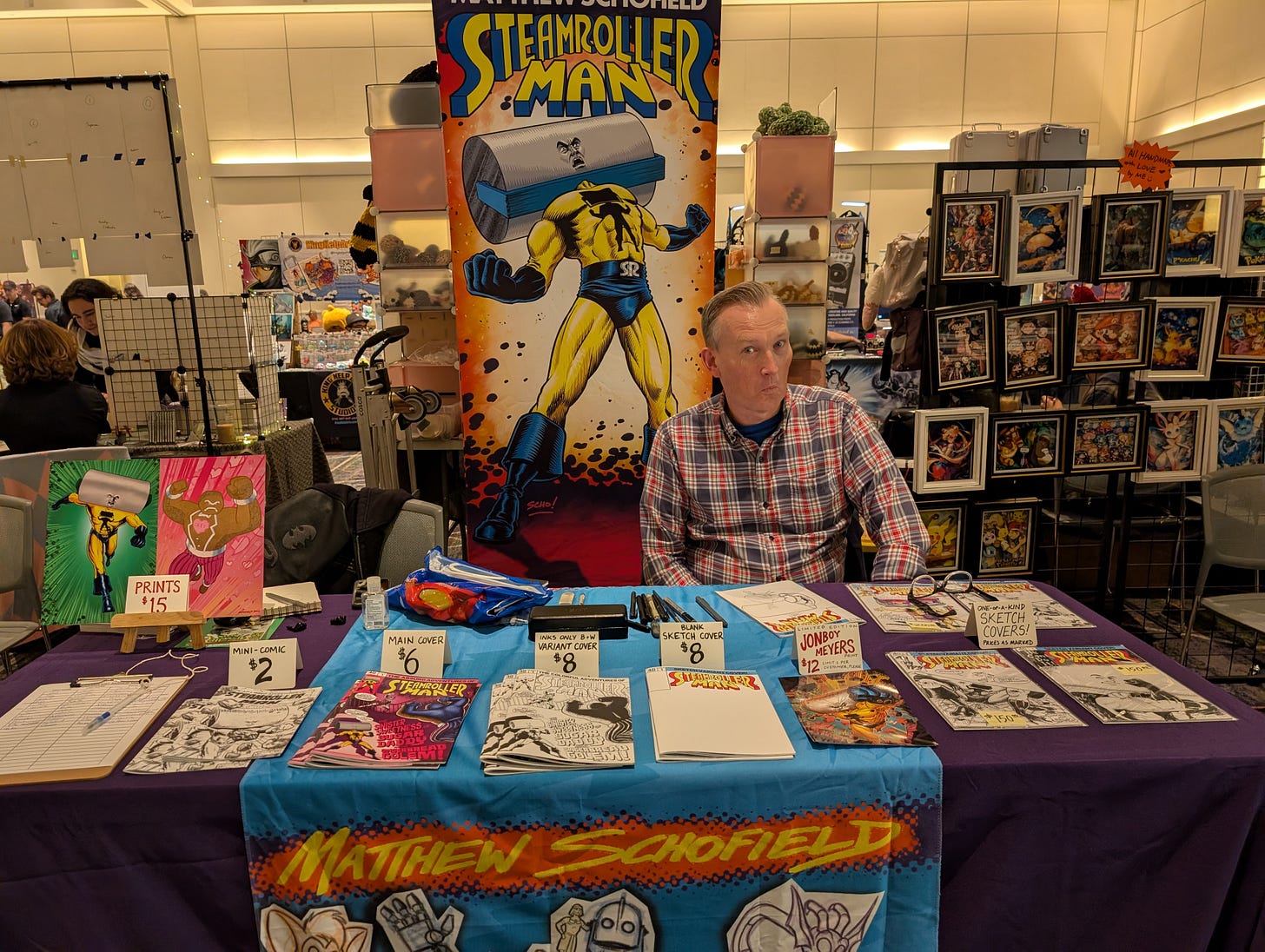
I can’t wait to eventually bring you out to the Oklahoma Comic Arts Festival. Just comics & creators, no Funko Pops or Power Rangers fresh from rehab! In an arts center, not a convention hall! You will be treated like the royalty you are.
I want to thank you sincerely for posting about your experience tabling at different cons and what you’ve learned. I’ve got my first tabling experience as an indie comic artist in just a few days (yikes!) and your Substack has been far and away the best resource for getting a sense of what I might be able to expect.
So please, keep up the knowledge sharing! 🙏 There are so few resources reviewing different cons and tabling strategies for indie comic artists, so you’re definitely filling a void!
Great read as always.